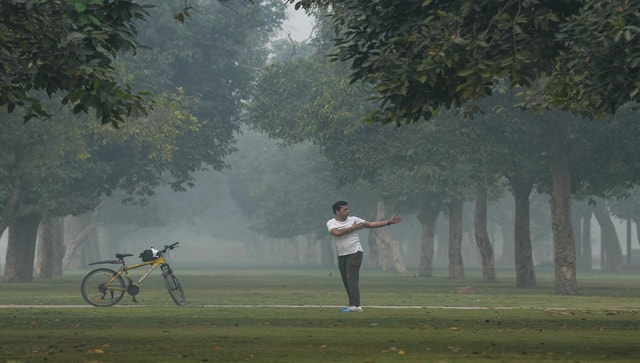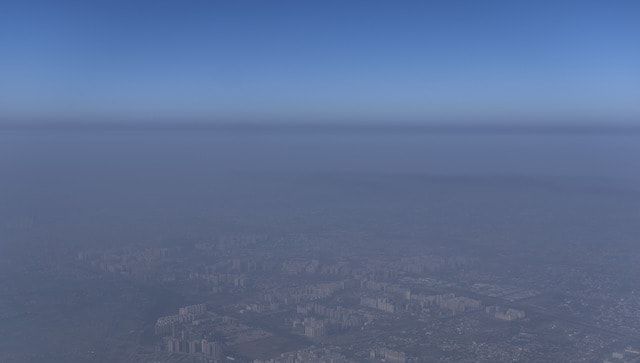Air pollution spiked in several cities in India after Diwali, including Delhi and Mumbai. Two days after the festival of lights, both places continue to be among the 10 most polluted cities across the world, according to Swiss group IQAir’s rankings. Smog engulfed the National Capital and its nearby cities as air quality plunged further today (14 November). In Mumbai, air quality is in the ‘moderate’ category or worsened to even ‘poor’ in some areas. When the air quality index (AQI) touches hazardous levels, it is an alarming situation for all. Various studies have shown how air pollutants can lead to a rise in respiratory and cardiovascular diseases. However, were you aware that air pollution has also been linked to an increased risk of type 2 diabetes? On World Diabetes Day, let’s take a look at how breathing toxic air could trigger a rise in cases of type 2 diabetes. The Diabetes crisis The World Health Organization (WHO) estimates that over 400 million (40 crore) people around the world have diabetes. Of this, the majority of people live in low-and middle-income countries. The cases of diabetes have steadily soared over the past few decades, the United Nations health agency noted. In India alone, around 11.4 per cent of the population – over 10 crore – have
diabetes
, while more than 13 crore people are pre-diabetic, The Guardian reported citing a study published in the Lancet in June. Siddhartha Mandal, a researcher at Centre for Chronic Disease Control, Delhi, told the British daily that due to Indians having a “low BMI (body mass index) with a high proportion of fat”, they are more susceptible to living with diabetes than the Western population. What is type 2 diabetes? Type 2 diabetes occurs when blood glucose or blood sugar is too high. It is the most common type of diabetes where our body does not make enough insulin or does not use it as it should, as per the National Institute of Diabetes and Digestive and Kidney Diseases (NIDDK). Although people over the age of 45 are more vulnerable to type 2 diabetes, more and more children, teens, and young adults are also developing it. Air pollution and type 2 diabetes A key study in India has found that inhaling polluted air enhances the risk of type 2 diabetes. Part of the ongoing research into chronic diseases in India, this is the first study to examine the association between ambient PM2.5 and type 2 diabetes in India, according to The Guardian report. Fine particulate matter (PM) are particles less than 2.5 micrometers or less in diameter. They are more dangerous as they can reach deep parts of our lungs or even enter the bloodstream. [caption id=“attachment_13386592” align=“alignnone” width=“640”] Delhi is among the most polluted cities in the world. PTI File Photo[/caption] The study published in the BMJ Open Diabetes Research and Care journal last month analysed data from over 12,000 adults in Delhi and Chennai from 2010 to 2017. The blood sugar levels of these participants were recorded periodically, noted The Guardian. The paper revealed that a surge in PM2.5 particles led to high blood sugar levels and increased risk of type 2 diabetes. As per the study, being exposed to PM2.5 for a month could result in elevated levels of blood sugar, while one year or more exposure to the pollutant enhances the risk of diabetes, the British daily reported. ALSO READ:
World Diabetes Day 2023: Does too much salt really enhance the risk of type 2 diabetes?
Why does this happen? Experts say air pollution heightens diabetes risk through increased oxidative stress. Dr Sandeep Nayar, Principal Director & HOD, Pulmonology, BLK-Max Super Speciality Hospital, told Hindustan Times (HT) that pollution can damage beta cells in pancreas which could decrease insulin production, leading to diabetes. Once PM 2.5 gets into our respiratory system, it can affect our glucose metabolism. Speaking to Indian Express, Dr Rajiv Kovil, Diabetologist, Secretary at United Diabetes Forum, explained, “One of the key players in this drama is insulin, the hormone responsible for regulating blood sugar levels. Air pollution has been linked to insulin resistance, a condition where our cells become less responsive to insulin signals. Picture insulin as a key trying to unlock a cell door to let glucose in. PM2.5 and pollutants seem to be changing the locks, making it harder for insulin to do its job effectively”. [caption id=“attachment_13386632” align=“alignnone” width=“640”]
Delhi is among the most polluted cities in the world. PTI File Photo[/caption] The study published in the BMJ Open Diabetes Research and Care journal last month analysed data from over 12,000 adults in Delhi and Chennai from 2010 to 2017. The blood sugar levels of these participants were recorded periodically, noted The Guardian. The paper revealed that a surge in PM2.5 particles led to high blood sugar levels and increased risk of type 2 diabetes. As per the study, being exposed to PM2.5 for a month could result in elevated levels of blood sugar, while one year or more exposure to the pollutant enhances the risk of diabetes, the British daily reported. ALSO READ:
World Diabetes Day 2023: Does too much salt really enhance the risk of type 2 diabetes?
Why does this happen? Experts say air pollution heightens diabetes risk through increased oxidative stress. Dr Sandeep Nayar, Principal Director & HOD, Pulmonology, BLK-Max Super Speciality Hospital, told Hindustan Times (HT) that pollution can damage beta cells in pancreas which could decrease insulin production, leading to diabetes. Once PM 2.5 gets into our respiratory system, it can affect our glucose metabolism. Speaking to Indian Express, Dr Rajiv Kovil, Diabetologist, Secretary at United Diabetes Forum, explained, “One of the key players in this drama is insulin, the hormone responsible for regulating blood sugar levels. Air pollution has been linked to insulin resistance, a condition where our cells become less responsive to insulin signals. Picture insulin as a key trying to unlock a cell door to let glucose in. PM2.5 and pollutants seem to be changing the locks, making it harder for insulin to do its job effectively”. [caption id=“attachment_13386632” align=“alignnone” width=“640”] This aerial view shows smog enveloping the skyline on the outskirts of New Delhi on 12 November. AP[/caption] PM 2.5 also adversely impacts our heart. According to Dr Dorairaj Prabhakaran, cardiologist and executive director of the Centre for Chronic Disease Control, “PM2.5 contains sulfates, nitrates, heavy metals and black carbon that can damage the lining of blood vessels and increase blood pressure by stiffening the arteries. The particles can get deposited in the fat cells and cause inflammation and can also attack the heart muscle directly”, The Guardian reported. There is also an indirect link between air pollution and diabetes. As pollution level rises, people are advised not to venture outside or limit their outdoor activities. This may lead to a sedentary lifestyle which can further pave the way for diabetes, noted HT. With inputs from agencies
This aerial view shows smog enveloping the skyline on the outskirts of New Delhi on 12 November. AP[/caption] PM 2.5 also adversely impacts our heart. According to Dr Dorairaj Prabhakaran, cardiologist and executive director of the Centre for Chronic Disease Control, “PM2.5 contains sulfates, nitrates, heavy metals and black carbon that can damage the lining of blood vessels and increase blood pressure by stiffening the arteries. The particles can get deposited in the fat cells and cause inflammation and can also attack the heart muscle directly”, The Guardian reported. There is also an indirect link between air pollution and diabetes. As pollution level rises, people are advised not to venture outside or limit their outdoor activities. This may lead to a sedentary lifestyle which can further pave the way for diabetes, noted HT. With inputs from agencies
World Diabetes Day 2023: Is air pollution behind spike in diabetes in India?
FP Explainers
• November 14, 2023, 14:04:02 IST
Air pollution is hazardous to health. Besides toxic air, diabetes is already a concern for India. A recent study has now found a link between exposure to PM2.5 particles and increased risk of type 2 diabetes in the country
Advertisement
)
End of Article